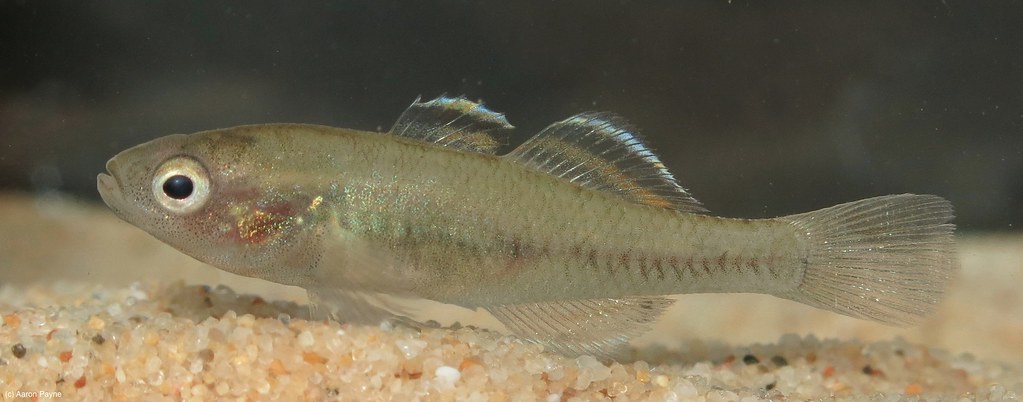Western carp gudgeon
(Hypseleotris klunzingeri)

Description
The western carp gudgeon (Hypseleotris klunzingeri) is one of several carp gudgeon species. Carp gudgeons are very small perciform fish (similar in size, shape and colour) found in the Australian Murray-Darling River system, mainly in lowland environments, but some have been observed in upland environments. They are often found in small creeks, as well as billabongs and the edges of larger rivers. They prefer water 1 to 2 m deep with aquatic weed and structure provided by rocks or sunken timber (usually the latter). Like many other Murray-Darling native fish species, western carp gudgeon have crossed the Great Dividing Range through natural river capture events and are found in a number of East Coast drainages, from the Hunter River system in northern New South Wales to the Fitzroy River system in central Queensland. Western carp gudgeon are small fish, averaging 30-40 mm long, though very large specimens may approach 60 mm. Usually, their bodies are yellowish to clear with subtle, dark grey blotches, with semitranslucent fins. Males develop spectacular spawning colours in summer, namely a more metallic-bronze body colour with a red stripe through the caudal (tail), anal, and spiny and soft dorsal fins. The red stripe through the anal and spiny and soft dorsal fins are topped with a tiny iridescent blue-white stripe, which are somewhat subtle on most of the fins, but are prominent and eye-catching on the spiny dorsal fin. Western carp gudgeons spawn in summer, attaching eggs to aquatic weed in the shallows. They may have suffered from small variations in river level caused by river regulation, which exposes and destroys eggs laid in shallows. They may be a critical food item for juvenile Murray cod, and likely are an important forage fish for larger fish species in many waterways. Western carp gudgeons have taken to lower-altitude, man-made lakes and impoundments in the Murray-Darling system well, and are very common in some. Western carp gudgeon make superb aquarium fish: they are lively, interactive, attractively coloured, and hardy. They eagerly take live or frozen brine shrimp, very small invertebrates, and commercial micropellet fish feeds. Curiously, they are unavailable in aquarium stores and remain the province of keen naturalists who capture their own. The specific name honours the German physician and zoologist Carl Benjamin Klunzinger (1834-1914), who, in 1880, mistook this species for Eleotris cyprinoides.
Taxonomic tree:







